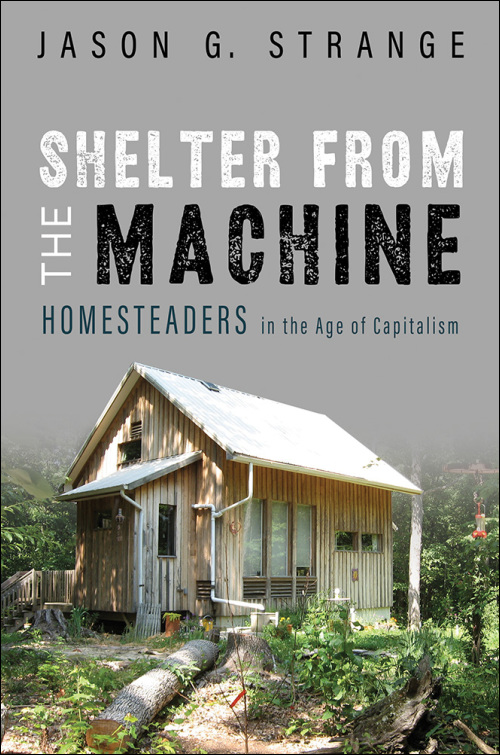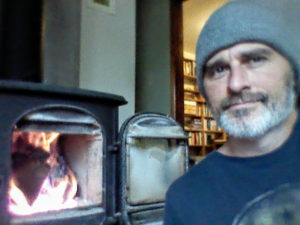The movement from the Appalachian region into cities like Cincinnati gave rise to the Urban Appalachian Community Coalition. Indeed, this migration completely came to redefine greater Cincinnati and other northern industrial cities. In recent years, changes in the ways we work and live, combined with the pressures and demands of contemporary life, have led some people to seek a return to Appalachia, toward a way of life that refuses the pace of the urban in favor of small towns and even remote areas of Appalachia.
The allure of moving back to Appalachia is strong for many urban Appalachians. Even people with no ties at all to the Appalachian region find the prospect of homesteading in the mountains appealing in the face of contemporary urban life. Some Appalachian states even have programs in place to attract people, particularly younger people, to the Appalachian Region. West Virginia, for example, has the Ascend West Virginia program that offers a $10,000 dollar grant to qualified people who want to relocate to the state. Within this cultural movement, we also find that group of people loosely defined as “homesteaders:” people who move back to the land, as it were, and make a go of some form of subsistence living, and Appalachia is a major destination for these people. Jason Strange has studied this movement and his book, Shelter from the Machine: Homesteaders in the Age of Capitalism, provides insights into the complexities of this cultural phenomenon.
One of the first and most important insights Jason Strange’s book offers is that homesteading is “a serious form of activism and resistance” against contemporary urban life and an effort “to build lives that make sense within a society that often does not.” Homesteading is a deliberate way of living, one that is complicated by everything that defines our contemporary society and culture. In order to tell the story of the various and vastly different amalgam of people who make up some of the homesteaders he met and studied in eastern Kentucky, Strange gives us an area called Bear Lick Valley. He says, “I had to create a fiction to properly tell the truth. I could not identify these places and people and risk exposing them to the very things they sought to avoid.”
Shelter from the Machine shows us that contemporary homesteaders tend to get broken down into “hicks” and “hippies,” but Strange immediately complicates this rather crass classification to show that homesteaders are an extremely diverse population, one that is not easily classified at all. In the book, Strange is quick to show us that these terms conjure up “a raft of dismissive stereotypes” and are often insulting. He uses the terms “country homesteaders” and “bohemian homesteaders,” but even this, as the book reveals, is only a short hand. “Homesteaders of both categories cross boundaries of identification,” he told me, and “these are tendencies more than firm categories.” In eastern Kentucky, “about 40 percent of the homesteaders are from the area.” This too would complicate fixed rules of identification.
Dr. Jason Strange is the Chair of the Peace & Social Justice Studies Department at Berea College. Though his intellectual and personal commitments led him to the topic of homesteading, he also comes to this topic quite naturally. As he told me, “I grew up outside Berea, Kentucky and was around the back to the land movement even as a child.” At 12-years old, Strange moved with his family to Humboldt County, California. This is perhaps the most well-known hippie mecca in the U.S., and he was exposed to still more homesteaders and others with a strong ecological and rural ethos. When it came time to identify a dissertation topic, he realized the topic was near at hand: “I grew up around all these interesting things and people and began thinking about back to the land and homesteading. I realized there was not that much research on this topic,” he explained. “I just thought, why don’t I study something close to home?” The result is the Shelter from the Machine: Homesteaders in the Age of Capitalism.

It is important to emphasize the second part of the title of Strange’s book. The book takes on some of the issues and problems inherent in contemporary capitalism and how these things pertain to the homesteading movement. While some are driven to take on the homesteading way of life as a direct response to the pressures of capitalism, these same pressures create and sustain differences within the groups of people who live in this way. Strange said that these differences have to do with things like “access to literate knowledge and disparities in access to education, which create differences that are really stark.” These differences and disparities can lead to real divisions between the various types of homesteaders, and it bears down on our ideas of what being a homesteader means. This attention to economic disparity and privilege has everything to do with Dr. Jason Strange’s approach to research and teaching. He is acutely aware of how economic conditions impact our understandings of social phenomena, and his book consciously avoids exclusionary academic language in order to reach a wide readership.
The realities of homesteading in Appalachia, or anywhere for that matter, are complex. Jason Strange pointed out that homesteaders exist on a continuum: “There are hardcore homesteaders who built their own homes from lumber they cut and milled themselves, and there are those who live in a manner that consists primarily of a balance between subsistence and frugality.” His book makes it clear that what we commonly lump into a single category really consists of a vast array of ways of living. One thing that ties them all is the drive to resist the demands of contemporary culture, to live in a way that brings life in contact with the land, and to work toward some measure of self-subsistence.
Dr. Jason Strange is currently working on a science fiction novel. I asked him how this came about, and he responded, “I was driving in my car and just asked myself, if I wrote a sci-fi novel, what would it look like? For the next three hours, it just poured out of me.” I will not provide any spoilers on the novel. Following the muse and inspiration is a feature of how Jason Strange works. This and his commitments to social justice and his belief in the creative and transformative power of the written word are the foundation of his work both as an educator and as a scholar.
So many of us in greater Cincinnati have ties to places in Appalachia. It is not difficult to imagine romanticized visions of returning to the home places of our families. And it is not much of leap from there to imagine trying to return to a simpler way of living that is in harmony with nature. But these are romantic ideals. Dr. Jason Strange’s book, Shelter from the Machine: Homesteaders in the Age of Capitalism, shows us the complexities and difficulties of homesteading. It also reveals the economic pressures that drive homesteading and appear to reproduce some of the conditions and divisions we would hope to escape with a return to the land. Movement back to the Appalachian region and homesteading raises important questions for the Urban Appalachian Community Coalition. How will we account for those who live in a state of movement, who are neither completely urban nor rural but both/and? And how are we going to define the urban Appalachian in the 21st century as people attempt to reclaim their Appalachian heritage across both time and space? Dr. Jason Strange has offered us a powerful new way of taking stock of Appalachia and Appalachian culture,
Shelter from the Machine: Homesteaders in the Age of Capitalism is published by The University of Illinois Press.
For a link to Dr. Jason Strange’s profile at Berea College, follow this link: https://www.berea.edu/psj/faculty-and-staff/dr-jason-strange/.
Mike Templeton is a writer, independent scholar, barista, cook, guitar player, and accidental jack-of-all-trades. Check out his profile in UACC’s new Cultural Directory. He lives in downtown Cincinnati with his wife who is a talented photographer. They spend their free time walking around the city snapping photos. She looks up at the grandeur of the city, while Mike always seems to be staring at the ground.
Cover image source: https://www.berea.edu/psj/faculty-and-staff/dr-jason-strange/

